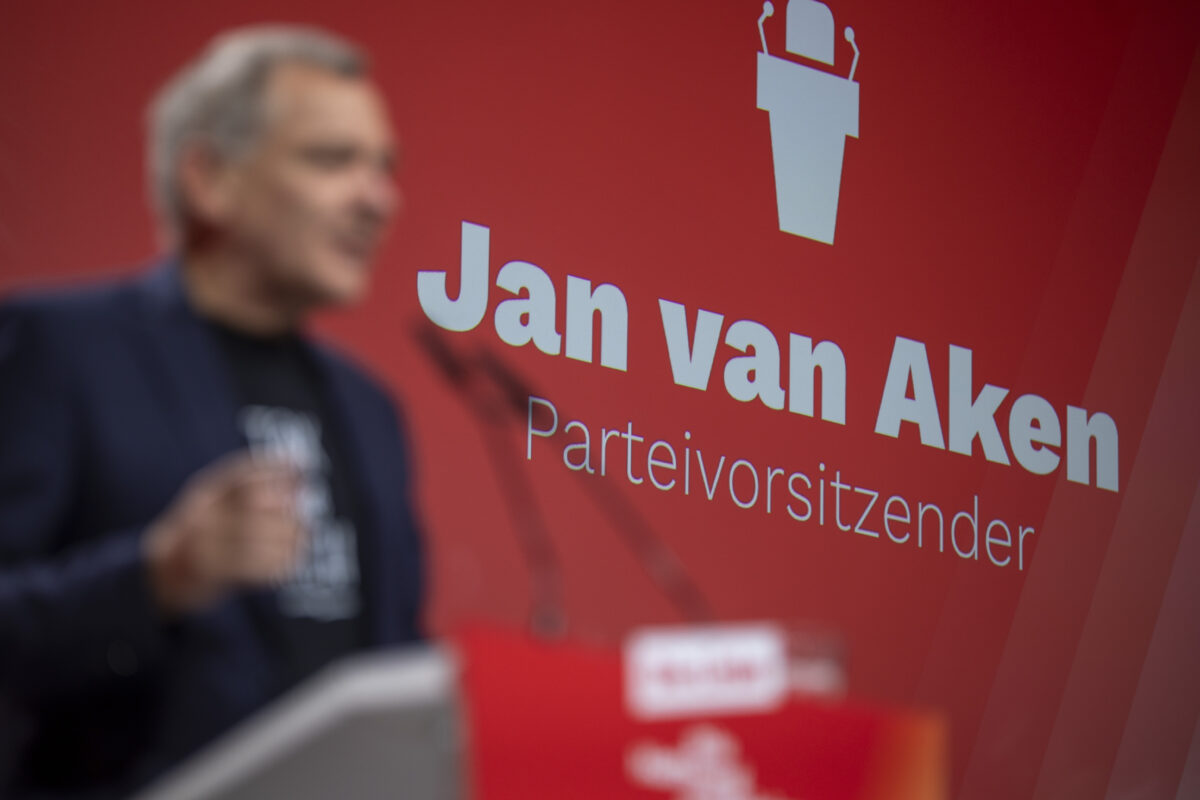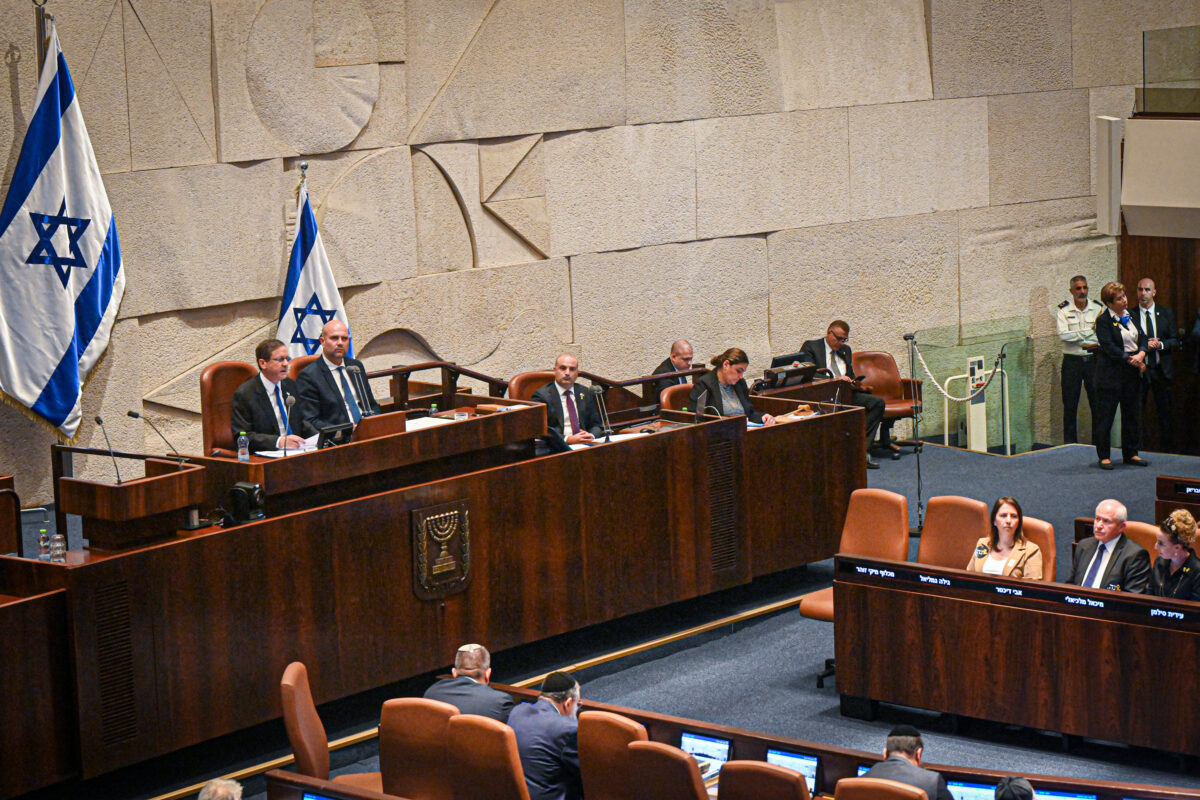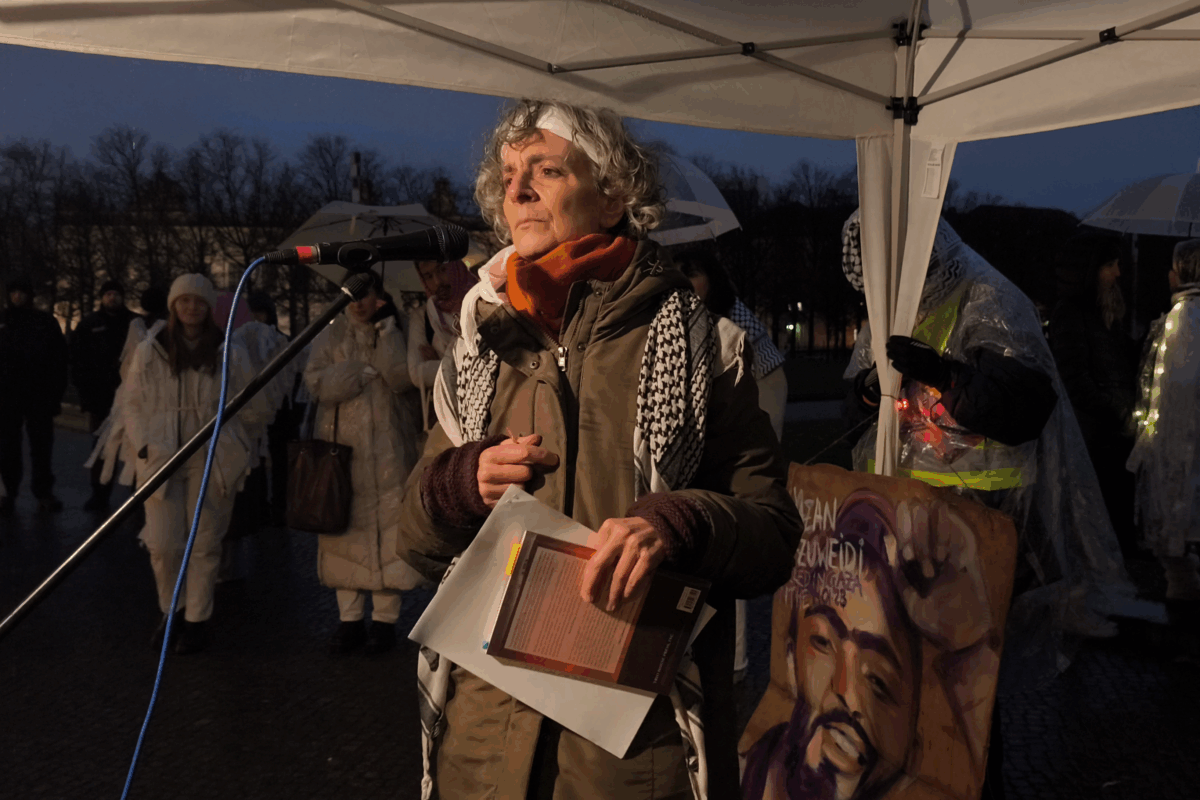On May 9 and 10, Die Linke held its federal party convention in Chemnitz, where one resolution garnered special interest: a motion to adopt a definition for the term “antisemitism.” Titled ”Fight Antisemitism, Repression and Censorship―Adopt the Jerusalem Declaration, create a tenable foundation,” the resolution aligned the party with the Jerusalem Declaration on Antisemitism (JDA) and distanced it from the Working Definition of Antisemitism by the International Holocaust Remembrance Alliance (IHRA), prevalent in German discourse. So what about it? What is the rationale of the resolution, what criticism has been brought forward, and how can the discussion be situated within the German scientific discourse and political reality?
Accusations of antisemitism have been gaining ground in Germany. The government is firm in its commitment to the illustrious raison d’état (Staatsräson) and continues to provide arms to Israel, deeming accusations of genocide unwarranted while employing the IHRA definition to decry demands for sanctions and boycotts as antisemitic. If they have not already censored themselves, those who take to the streets in light of the horrors in Gaza, academics who express solidarity with protesting students, or public figures in media and culture are all also accused of antisemitism. The crux of these accusations is the assumption that what is being voiced is criticism not of Israel, but of Jews as a people. The accusers claim that hatred of Israel is hatred of Jews, and that ultimately it is all plain antisemitism. The terms seem freely interchangeable with no delineation between them.
This is due to the prevalent definition of antisemitism in Germany, supported by government officials and agencies, and endorsed by stakeholders such as the Zentralrat der Juden in Deutschland (Central Council of Jews in Germany). The IHRA definition does not concern itself with a clear distinction between criticism of Israel and antisemitism; where it offers distinctions, they are generally restrictive. Die Linke’s new resolution seeks to remedy these shortcomings. It is intended to provide a basis for the identification of antisemitism while maintaining the possibility of legitimate criticisms of the state of Israel, responding to the climate of repression and (self-)censorship without giving up on a resolute fight against antisemitism. For this purpose, Die Linke chose the Jerusalem Declaration, one of the most widely used academic definitions, against the more institutional IHRA definition.
Definitional projects
The Jerusalem Declaration on Antisemitism was developed in direct dialogue and response to the IHRA Working Definition and its institutional importance. The latter was designed with the aim of broadening the perspective beyond the scope of the classical antisemitism of the 1800s and the cultural racism of the post-World War II era. It focuses explicitly on including new or Israel-related antisemitism, accounting for political actors beyond the right, especially with regard to the Israel/Palestine conflict. The political conditions which brought about the IHRA definition were heavily influenced by this context, and the definition zeroed in on the positions surrounding the conflict.
In Germany, the adoption of the IHRA definition converged with a discourse that prioritized “structural” antisemitism, or the “left” antisemitism found in globalization criticism. One of the excesses of this definitional shift is the idea of “imported antisemitism,” which both hides the historical crimes of the German right and provides fuel for their neo-fascist rhetoric machine. The IHRA’s insufficiently distinct wording has produced a conflation of criticisms of the state of Israel, criticisms of Zionism as a project, and antisemitism: “Antisemitism is a certain perception of Jews, which may be expressed as hatred toward Jews. Rhetorical and physical manifestations of antisemitism are directed toward Jewish or non-Jewish individuals and/or their property, toward Jewish community institutions and religious facilities.”
Foremost, one addition which the German government itself has inserted reinforces this tendency: “Furthermore, the state of Israel, which is understood as a Jewish collective, can also be the target of such attacks.” While not part of the official IHRA phrasing, this addition spells out how the IHRA definition can be used to blur the lines between the state of Israel and Judaism. All the more because of the omission of a subsequent suggested additional passage stating that “criticism of Israel similar to that leveled against any other country cannot be regarded as antisemitic.”
By contrast, the wording of the JDA―“Antisemitism is discrimination, prejudice, hostility or violence against Jews as Jews (or Jewish institutions as Jewish)”―aims to rectify these ambiguities. The definition is accompanied by a list of 15 Guidelines, divided into “General,” “Israel and Palestine: examples that, on the face of it, are antisemitic,” and “Israel and Palestine: examples that, on the face of it, are not antisemitic.” The guidelines are intended to clarify the definition and act as helpful tools for its application. In its Preamble, the initial signatories, among them known professors and experts such as Omri Boehm, Eva Illouz, Uffa Jensen, Peter Ullrich, Moshe Zimmermann, or Susan Neiman, explicitly criticize the ambiguities, incoherencies, and controversies produced by the IHRA definition, which hinder the fight against antisemitism. The JDA definition was devised in a process spanning more than a year, aiming to find a balance between academic precision and political intervention, rather than pitting them against each other.
It has become clear that the development process of both definitions was contingent upon their political conditions and that both definitions have an explicitly political dimension. Amos Goldberg, one of the initial signatories of the JDA, has pointedly called the IHRA definition Israel’s “diplomatic Iron Dome,” an instrument of defense for Israel’s political interests. The focus on “left” antisemitism, in conjunction with the partial silencing of criticism of the state of Israel and political Zionism, has been a crucial part of the academic debate surrounding these definitional projects. At the same time, both definitions have been subject to criticisms that the focus on the conflict in the Middle East threatens to lose sight of right-wing antisemitism. These frictions and ambiguities have become more and more clear to the public’s eye ever since the genocide against the Palestinians in Gaza started.
A resolution against German discourse
Die Linke’s resolution to adopt the JDA definition has been the latest instance where this debate has found public attention. Statements by the Zentralrat der Juden in Deutschland, the WerteInitiative, or the Jüdische Forum für Demokratie und gegen Antisemitismus (The Jewish Forum for Democracy and against Antisemitism) have had a significant media impact. Apart from a few positive reactions, the direction has been clear: Die Linke has forsaken the fight against antisemitism, will give hatred of Israel free rein, and has turned its back on the Jews (who, as far as one could tell by the statements, are monolithic in their support of the IHRA definition). This monolithic picture does not hold water, however. In an interview with nd, historian Amos Goldberg said:
“Mr. Schuster [Chairman of the Zentralrat der Juden in Deutschland] and the German political discourse apparently differentiate between ‘good Jews,’ such as Mr. Schuster, and ‘bad Jews,’ such as me―that is, between legitimate expressions of Jewishness and wrongful, illegitimate expressions. I can, however, tell you as a Jew and Israeli―a country in which I have lived all my life―that I find my Jewish identity to be reflected in the values of the Jerusalem Declaration and that I am not alone in this.”
And alone, indeed, he is not. Alongside renowned academics, among them Jews and Israelis, there have also been Jewish organizations, such as the Jewish Voice for Just Peace in the Middle East, which have welcomed the resolution. Die Linke’s decision has also been encouraged by Hadash, the left-wing electoral alliance in Israel, which invited the European Left to follow its example. Those very same organizations that appear to manufacture a monolithic Jewish community in Germany have not shied away from accusing Jews and Israelis of antisemitism, concealing the reality of a plurality of opinions within the Jewish community. The primary goal of the recent criticisms appears to be, in keeping with the history of the IHRA definition, supporting the politics of the state of Israel and its German raison d’état counterpart, rather than an honest attempt to act as a representative of Jewish people and their positions. It can then not elicit much surprise to witness the continuing volatile, ambiguous and interchangeable use of “Israel-hater” and “antisemite” when criticism of Die Linke is made.
To put it plainly: The party’s resolution adopting the JDA is not levelled against Jews, in Germany or anywhere else. Rather, one of its core desires is to protect the Jewish community, not least from the danger of being held responsible (explicitly or implicitly) for the war crimes committed by the state of Israel, a danger posed by the vanishing distinction between Judaism and the state of Israel in public discourse. The resolution is levelled against the established direction of German politics. It is an explicit response to the antisemitism resolutions adopted by the Bundestag (the federal parliament): “Nie wieder ist jetzt―Jüdisches Leben in Deutschland schützen, bewahren und stärken” (“Never again―Protect, preserve and strengthen Jewish life in Germany”) and “Antisemitismus und Israelfeindlichkeit an Schulen und Hochschulen” (“Antisemitism and hatred of Israel in schools and universities”).
Those resolutions can be seen as one of the multiple signs of an ongoing advance of authoritarian and anti-migrant rhetoric in Germany, covered and justified by rampant accusations of antisemitism. While the resolutions aim at restricting freedom of expression in art and academia and explicitly target calls for sanctions or boycott, the Ministry of the Interior adopts the rhetoric of “Israel-hater” and “imported antisemitism” when presenting figures on political violence. Using this pretext, politicians then call for harsher sentences against and more deportations of migrants and inconvenient activists, such as the Berlin4. Thus, the vague handling of the term antisemitism facilitated by the adoption of the IHRA definition becomes a gateway for increasing authoritarian tendencies in social discourse right up to government circles. Combating this direction of discourse and active state intervention, as well as combating arbitrary detainment, bans on assembly, and censorship and self-censorship, requires the establishment of the JDA.
There have also been voices within the party who are critical of the resolution. One argument, made by chairman Jan van Aken in the preceding debate and, in a less eloquent way, by Bodo Ramelow, claims that the party congress must not dismiss academic discourse. This is a position that may have worth if it were made in a context where academic debates are decoupled from reality. But, even if this were the case, one would need to be consistent: If adoption of the JDA should be rejected due to the ongoing debate in antisemitism studies, so would the adoption of the IHRA definition that has crept into public discourse and even government bodies.
This, however, has not been the reality in Germany. Those who now fear a premature dismissal of academic debate failed to campaign against the IHRA definition while it was established by the German state and by various political parties and organizations. The argument is also indefensible in light of the political circumstances. Terror attacks such as the one in Halle in 2019 have shown that there is a grave danger of antisemitism in Germany. And that, in order to fight this danger, one requires a means to identify antisemitism. There simply is an irrefutable need for a definition of antisemitism for political praxis. This is why the resolution does not just refute the IHRA definition, but constructively supplants it with the JDA.
Die Linke as vanguard?
In the end, the question remains why such flimsy excuses of an argument can reach the highest echelons of the party and take root there. Other motives might be at play in rejecting the resolution. Die Linke has placed itself into the vanguard by establishing the JDA as a means to identify antisemitism. A considerable feat in a country where, after 19 months of bombardments and intentional starvation of the civilian population, weapons are still supplied to the perpetrator. Die Linke has renounced some of the established pathways of German politics. Finally, some might say. This is true, but it also means that the party is fortifying its place in the opposition, something that does not necessarily accord with the career management of some politicians.
The resolution signifies progress in German discourse. Or, at least, within Die Linke. Still, it is just the start, an attempt to create and defend spaces that are uncompromising in their commitment to humanity. Spaces for the protection of all people, no matter if Jews, Palestinians, or citizens critical of their government in Germany. The path to material improvements for the people in Gaza, however, appears to be long and winding. There is much left to do to change the German course of complicity and to counteract authoritarian tendencies. This path needs people who become active according to their ability, who take to the streets or take positions in political and social debates, always with a sensibility for a productive and non-instrumentalized use of the term antisemitism.




